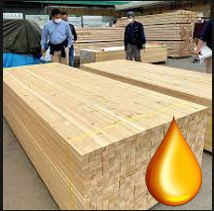The Ultimate Guide to Understanding Wood Lumber Prices

Understanding the Current Lumber Wood Prices
April 8, 2023
The Ultimate Guide to 84 Lumber Wood Prices
April 8, 2023What Determines Wood Lumber Prices?
Supply and Demand
Wood lumber prices are an important factor to consider when planning any building or renovation project. The cost of wood lumber can vary greatly depending on a variety of factors. In this ultimate guide, we’ll explore what determines wood lumber prices, and provide you with the information you need to make informed decisions about your next project.

What Determines Wood Lumber Prices?
One of the primary factors that determine wood lumber prices is supply and demand. When there is a high demand for wood lumber, prices tend to increase. Conversely, when there is a low demand for wood lumber, prices tend to decrease.
Another factor that affects wood lumber prices is the availability of wood. If there is a shortage of wood due to environmental factors, such as drought or forest fires, prices will increase. Additionally, if there are restrictions on logging or other factors that limit the supply of wood, prices will also increase.
Quality is also an important factor when it comes to wood lumber prices. Higher-quality wood is typically more expensive than lower-quality wood. This is because higher-quality wood is more durable and tends to last longer, making it a better investment over time.
Finally, transportation costs can also impact wood lumber prices. If the wood needs to be transported a long distance, the cost of transportation will be factored into the overall price of the wood.
What Determines Wood Lumber Prices?
One of the primary factors that determine wood lumber prices is supply and demand. When there is a high demand for wood lumber, prices tend to increase. Conversely, when there is a low demand for wood lumber, prices tend to decrease.
Another factor that affects wood lumber prices is the availability of wood. If there is a shortage of wood due to environmental factors, such as drought or forest fires, prices will increase. Additionally, if there are restrictions on logging or other factors that limit the supply of wood, prices will also increase.
Quality is also an important factor when it comes to wood lumber prices. Higher-quality wood is typically more expensive than lower-quality wood. This is because higher-quality wood is more durable and tends to last longer, making it a better investment over time.
Finally, transportation costs can also impact wood lumber prices. If the wood needs to be transported a long distance, the cost of transportation will be factored into the overall price of the wood.
Selling Wood Lumber
When selling wood lumber, it’s important to consider these factors that determine wood lumber prices. You’ll want to price your wood competitively based on the current market demand, availability, quality, and transportation costs. It’s also important to keep in mind that the market for wood lumber can fluctuate, so you may need to adjust your prices accordingly.
To attract potential buyers, you may want to highlight the quality of your wood, its source, and any unique features it may have. Additionally, you may want to offer discounts for bulk purchases or long-term contracts.
Meta description: Looking to buy or sell wood lumber? Our ultimate guide explains what determines wood lumber prices, and provides you with the information you need to make informed decisions. Plus, learn how to price and market your wood to attract potential buyers.
